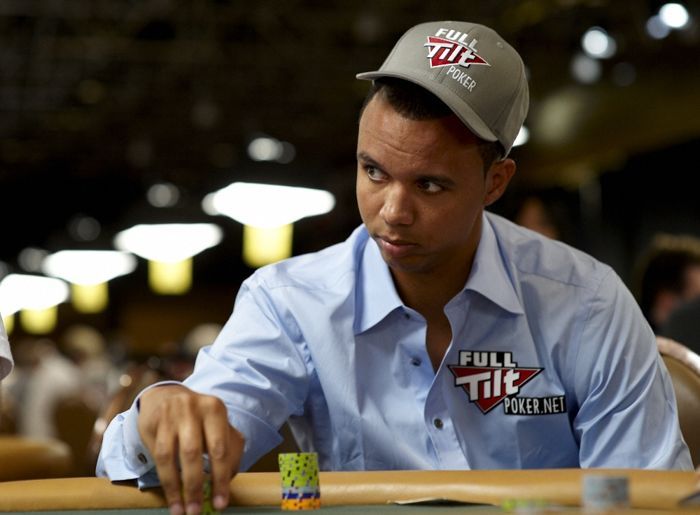Full Tilt Poker Brand and Software to be Retired Feb. 25

Table Of Contents
One of the most iconic �� and perhaps most infamous �� brands in poker will become a thing of the past on Feb. 25.
That's the reported date on which PokerStars will shelve Full Tilt Poker, its former arch rival, for good. The news was first released by Pokerfuse and is confirmed by a FAQ page on PokerStars' website detailing some of the minutiae of the move for its remaining FTP players.
Those players will essentially just be migrating over to the main skin of the network, so there won't be much meaningful change in their playing experience.
"Our commitment to improving PokerStars software and the PokerStars customer experience in recent years has limited the amount of focus and resources we could apply to the evolution of Full Tilt," the company stated. "We feel it is time to consolidate brands so that everyone has access to the newest features and most innovative games which are available exclusively on PokerStars."
A Rich History...
Full Tilt Poker was not one of the early sites to market, dealing its first virtual cards in 2004.
However, co-founder Ray Bitar teamed up with some of the biggest names in the industry. The likes of Phil Ivey, Howard Lederer, Chris Ferguson and Mike Matusow were behind the brand, and their celebrity, combined with an aggressive marketing push, led to huge success for the site.
"Learn, chat and play with the pros."
That ubiquitous slogan, along with the trademark black and white commercials creatively utilizing the site's immense roster of sponsored pros, beckoned countless thousands of players to give Full Tilt a try. The brand became a world leader, trailing only PokerStars in a raw numbers.
But where PokerStars laid claim to the biggest quantity, Full Tilt could credibly claim to house the best quality of poker in the world.
The highest stakes games in the world usually ran there, including monstrous and legendary games as high as $500/$1,000 blinds on the famed Rail Heaven table. Patrik Antonius, Viktor Blom, Hac and Di Dang, Gus Hansen, Ivey and more made Rail Heaven their favored battleground, which in turn made it the greatest place for fans to watch six-figure pots trading hands on the regular.

Correspondingly large pot-limit Omaha tables eventually produced the biggest pots in online poker history.
The software, too, was almost as celebrated as the quality of the games. Colorful avatars and lively animations made for an entertaining experience for the casual player. A fun MTT schedule gave tournament grinders tons of options at every price point and let players aspire to one day earn a custom avatar by virtue of winning a Full Tilt Online Poker Series event.
Considered industry leaders in many respects, the FTP team birthed innovations like fast-fold poker �� now a mainstay almost everywhere �� and rolled out creative ideas like Irish poker that were later adapted in some fashion by PokerStars.
It all made for a high-quality and incredibly popular product. And it all came to a crashing halt in 2011.
...But a Marred One, Too
The machinations of Black Friday dealt harsh blows at many levels of the poker industry, with the ripple effects being felt to this day.
However, perhaps the most shocking development in the aftermath was the revelation that Full Tilt's accounts were more than $300 million underwater. The company had $60 million cash on hand but player balances amounted to $390 million, with $150 million of that owed to U.S. players.
After repeated assurances from company reps that players would be paid, the fact of the matter was the company simply didn't have the money to make good on that promise.
Luckily for everyone involved, PokerStars stepped in and acquired Full Tilt's assets, with part of the deal stipulating they'd make the players whole in the process.
Entire books could be written about the ordeal and the fallout thereafter, all of which is to say the whole thing is beyond the scope of this article. Suffice it to say some former FTP brass paid millions in penalties, others became pariahs, friends became enemies and countless poker players everywhere were left with sour tastes in their mouths regarding a once beloved company.

Relaunch and Merger
Full Tilt Poker relaunched in November 2012, but it quickly became a shell of its former self. FTOPS returned, and high-stakes action even got rolling, but the site predictably failed to regain its former glory.
As the operator slid in the worldwide rankings, company brass attempted some moves that left many in the industry scratching their heads. Rake was bumped up in many spots, rewards were cut in others, table maxes were changed from six to five players in some games and many high-stakes offerings were removed from the client altogether.
The result?
A dive in traffic as unhappy players left the site. That was in August 2015.
Early the next year, decision-makers at parent company Amaya opted to pull the plug on Full Tilt being a standalone operator, migrating the players into the same pool with PokerStars. What would have once been monumental, industry-shaking news, barely registered as a blip on the poker radar, the surest sign of all that the glory days of Full Tilt were far in the past and never likely to rekindle.

Seemingly Little Chance of Return
After the merger, PokerNews spoke to industry expert Chris Grove to get his take on the functional end of the once-proud brand. He pointed to the decline of the international online poker market as a whole as a big reason for the decision to migrate the players to PokerStars.
"In a world where Full Tilt found a unique niche or footing, or in a world where online poker continued to expand, I think we certainly could have seen the two sites continue on separately," he said. "Only when it became clear that Full Tilt wasn't finding that footing did a merger start to seem like a matter of 'when' more than 'if.'"
With online poker moving toward a regulated future in the U.S., that meant there could have been buyers interested in acquiring Full Tilt. They'd get to avoid the headache of constructing software from scratch, to say nothing of the brand's name recognition stateside. Grove estimated PokerStars could rake in between $10 million and $50 million with such a move.
Of course, that would require interest by the selling party as well, and that never seemed much of a possibility. Poker Industry PRO reported being told by a company rep the software wasn't for sale ($), and nothing that happened in the intervening years has made that appear to be mere lip service.
The most likely case going forward would appear to be Full Tilt Poker simply collects dust in a virtual PokerStars storage room. In one sense, having your once-chief rival neatly tucked away on some backup storage drive is the ultimate power move.
In another, though, it's the most sad, meek ending imaginable to a company that took the poker world by storm more than 15 years ago.








